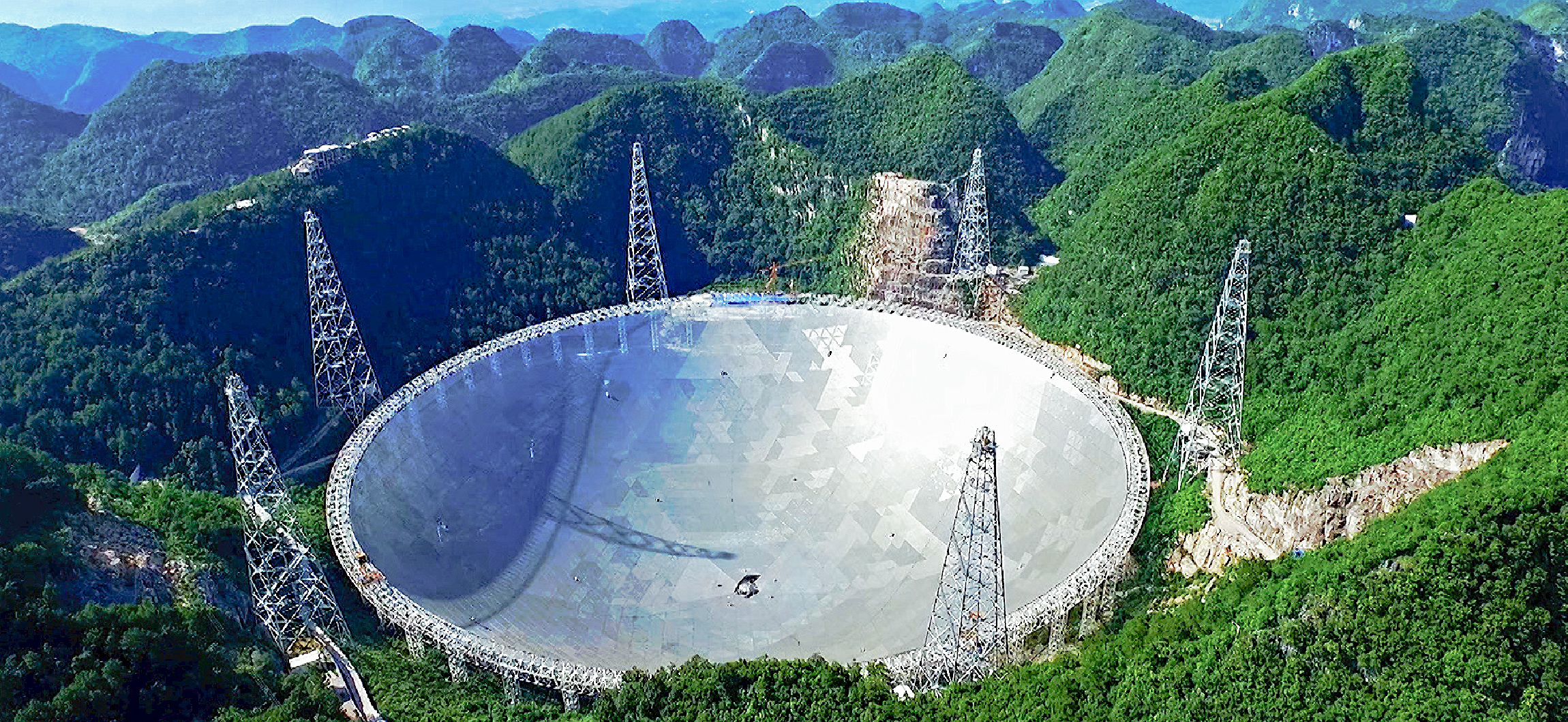FAST, Five-hundred-meter Aperture Spherical radio Telescope is the world's largest single dish filled-aperture radio telescope. The idea of building a radio telescope was first introduced by the “Father of FAST”, the late Prof Nan Rendong in July 1994. In the following 22 years, Prof Nan had been leading the engineering team on site selection and design of FAST and carried out different investigations. The construction of FAST was completed in Guizhou, China in 2016. After testing and commissioning, it was declared fully operational in January 2020.
World’s largest receiving surface
The receiving surface area of FAST is 250,000 square meters, which is equivalent to 30 football fields. The sensitivity of FAST is 2.25 times higher than that of the 300-m Arecibo Observatory radio telescope in the United States and about 10 times higher than that of the Effelsberg 100-m Radio Telescope in Germany. When space radio waves travel long distances in the universe, the signal becomes very weak. If the aperture of the telescope is larger, more cosmic signals can be received. FAST can also detect HI (neutral hydrogen) in the universe. HI is produced during the Big Bang of the universe. Scientists can learn more about the mystery of birth of the universe by observing the HI. Also, to make sure that FAST will not be interfered by other signals, an area within 5-kilometer radius from FAST is classified as quiet zone.
Detecting pulsars
Because of the stable and regular electromagnetic radiation emitted from pulsars, we can locate different pulsars in the universe. As early as 2017, FAST had discovered several new pulsars during the commissioning phase. In 2018, with the collaboration of FAST, NASA and the Space Research Laboratory at the University of Hong Kong, a pulsar which is about 4,000 light years away and about 5 billion years old was also discovered. As of 2019, FAST has discovered 132 pulsar candidates, of which 93 have been confirmed as newly discovered pulsars. With enough number of pulsars located, it can help locate and navigate the spacecraft in the universe in the future like using GPS on Earth.
Future mission
The National Astronomical Observatory of the Chinese Academy of Sciences announced that it is expected to launch an extra-terrestrial civilisation search program in September 2020. FAST is in the midst of upgrades that could reduce interference, after the upgrade, it can screen out the useful narrowband candidate signals for studying extra-terrestrial life from the received cosmic electromagnetic signals.
July 2020

